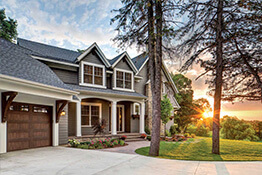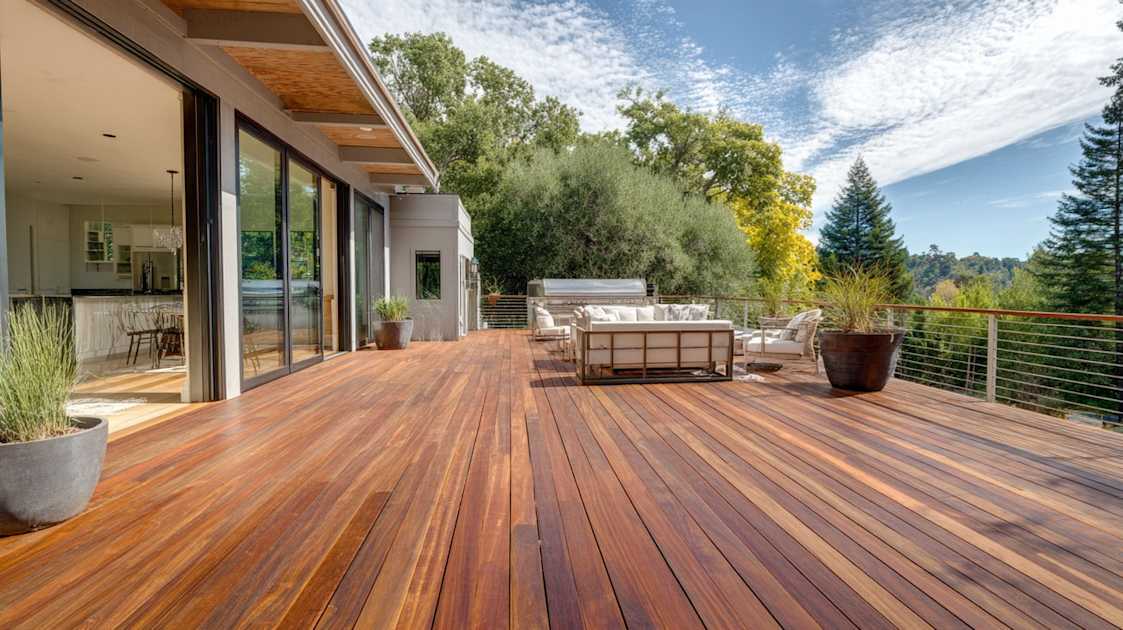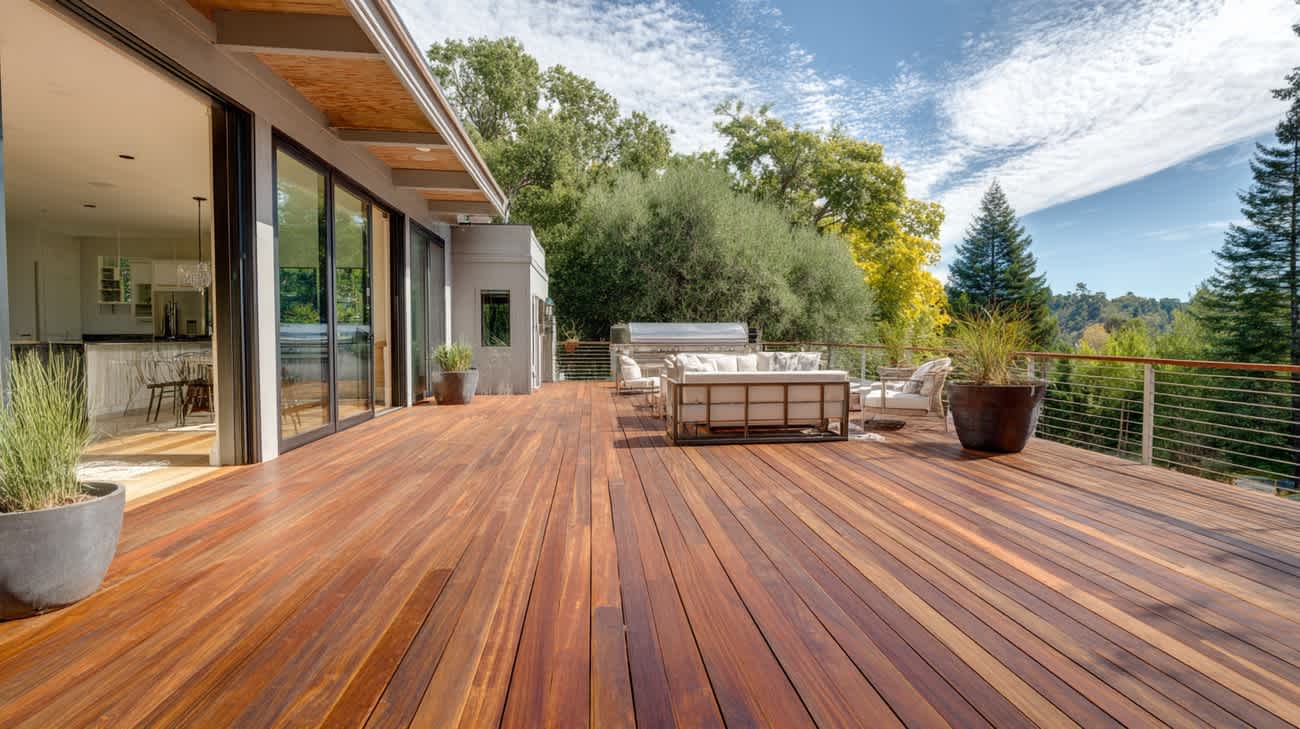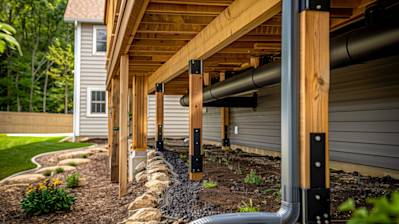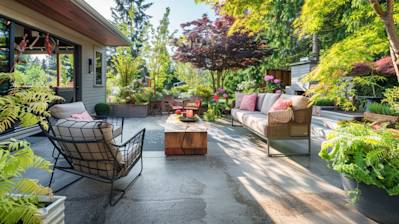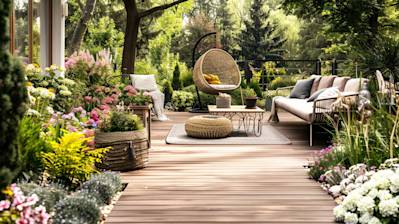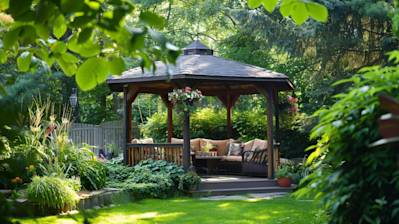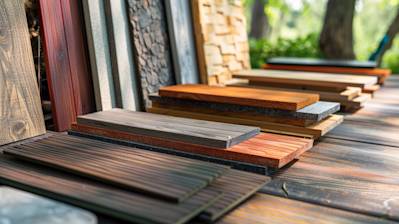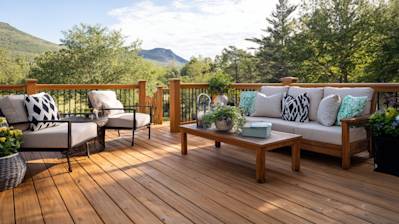When it comes to creating a stunning outdoor space, ipe wood decking is often regarded as the gold standard. Renowned for its incredible durability, eye-catching aesthetics, and resistance to the elements, ipe wood is a favorite choice for homeowners and builders alike. If you're considering ipe wood decking for your project, this comprehensive guide will provide all the information you need to make an informed decision.
What is Ipe Wood?
Ipe wood, pronounced "ee-pay," is a tropical hardwood originating from Central and South America. It belongs to the Tabebuia family of trees, which thrive in tropical climates, producing incredibly dense and resilient wood. Often referred to as Brazilian Walnut, ipe is celebrated for its deep brown hues and striking grain patterns that enhance any outdoor area with natural elegance.
Benefits of Ipe Wood Decking
Durability and Strength
One of the standout features of ipe wood decking is its durability. Ipe is one of the hardest woods available, with a Janka hardness rating of around 3,680, significantly higher than most domestic hardwoods. This incredible hardness makes ipe resistant to scratches, dents, and wear, ensuring your deck maintains its pristine appearance for decades.
Moreover, ipe has an impressive lifespan of up to 75 years with proper maintenance, making it a cost-effective long-term investment. Its resilience against heavy foot traffic makes it the go-to choice for public spaces as well.
Natural Resistance to the Elements
Ipe wood boasts natural oils and high density, rendering it inherently resistant to termites, fungus, and rot. These properties make it an ideal choice for outdoor use, especially in regions with high humidity or frequent rainfall. Also, ipe's remarkable resistance to fire is comparable to steel and concrete, which adds an extra layer of safety.
Aesthetic Appeal
The rich brown color and distinctive grain patterns are key attractions of ipe wood decking. Over time, ipe develops a beautiful silver patina if left untreated, but it can be regularly oiled to maintain its original color. The versatility of ipe allows it to complement various architectural styles and landscapes.
Installation of Ipe Wood Decking
Pre-Installation Considerations
Before starting your ipe decking project, it's important to prepare properly. Ensure that your decking space is adequately designed for ventilation due to ipe's density, which requires proper air circulation. Acclimate the ipe wood to your local environment by allowing it to sit in the installation area for at least a week.
Installation Tips
- Fasteners and Fixings: Use stainless steel screws and hardware to prevent staining and corrosion. Hidden fastening systems are popular for achieving a clean, undisturbed surface.
- Ensure Precision: Given ipe's density, precise cuts and pre-drilling holes are essential to avoid splitting the wood.
- Space Appropriately: Leave small gaps between boards (around 1/16 inch) to accommodate natural expansion and contraction.
Maintenance of Ipe Wood Decking
Cleaning Routine
Regular cleaning is crucial to preserve the appearance and integrity of your ipe wood deck. Sweep the deck to remove debris and use a garden hose or pressurized washer for deeper cleaning. Avoid harsh chemicals that could damage the wood's natural oils.
Enhancing Longevity
To maintain ipe's rich color, apply a UV-blocking oil finish annually. Popular choices include ipe oil and other specialized hardwood deck oils. If the deck has been left to develop a silver patina, a light sanding can help restore its original coloring before oiling.
Cost Considerations
While ipe wood decking tends to be more expensive than alternatives like cedar, pine, or composite materials, the investment pays off in longevity, beauty, and minimal maintenance over time. The initial cost varies based on location, supplier, and the dimensions of your project, but it's wise to factor in the long-term value ipe delivers.
Environmental Considerations
Sustainability is a growing concern for consumers, and it's reassuring to know that ipe wood decking can be an eco-friendly option when sourced responsibly. Look for suppliers who offer FSC-certified ipe, which ensures the wood is harvested from managed forests that adhere to ethical and sustainable practices.
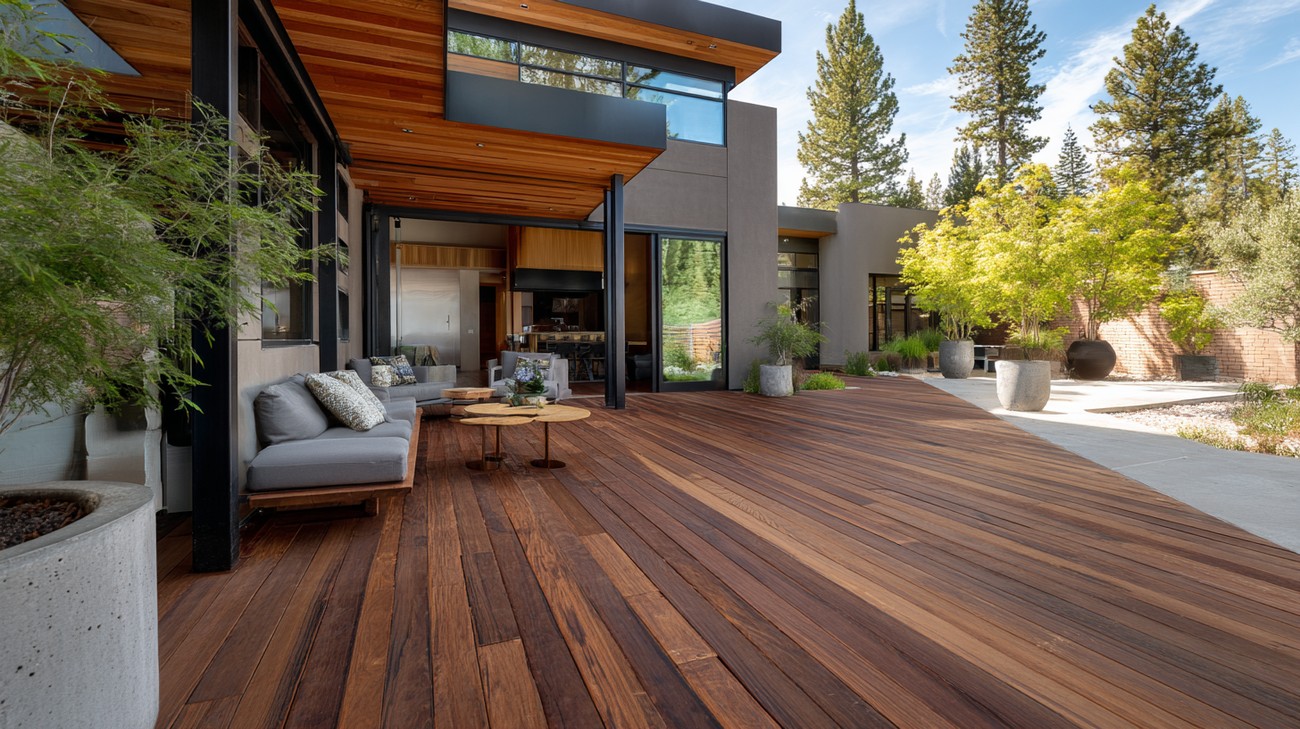
Frequently Asked Questions
How does the color of ipe wood decking change over time?
Ipe wood decking features a rich, deep brown color with variations that can include shades of olive and russet. Over time, exposure to sunlight causes ipe to naturally age to a beautiful silver-gray patina if not treated with UV protectant finishes. This weathered appearance is highly desired by many homeowners seeking a rustic or natural aesthetic. To maintain the original rich colors of ipe decking, regular application of a UV-blocking oil finish is recommended. This aspect of ipe wood makes it versatile for various design preferences.
What maintenance does ipe wood decking require?
Though ipe wood decking is renowned for its durability, it benefits from regular maintenance to retain its beauty and longevity. Basic care includes frequent sweeping to remove debris and prevent stains. Occasional washing with a gentle cleanser helps to preserve its appearance and cleanliness. To maintain the rich, brown hue, applying a UV-protectant oil once or twice a year is recommended. This maintenance routine helps protect against the graying effects of the sun and maximizes the lifespan and aesthetic value of the ipe wood decking.
Is ipe wood decking environmentally friendly?
Ipe wood decking is considered environmentally friendly due to several factors. As a natural material, it is biodegradable and does not emit harmful chemicals during its life cycle. Ipe wood is sourced from managed forests, and responsible suppliers adhere to regulations that ensure sustainable harvest practices. Its longevity also means that it doesn’t need to be replaced as often as other materials, reducing environmental impact over time. Choosing certified ipe wood decking from suppliers committed to sustainable forestry practices is vital to minimizing environmental impact.
How does ipe wood decking compare to synthetic decking materials?
Ipe wood decking outperforms many synthetic decking materials in terms of natural beauty and longevity. While synthetic decking requires little maintenance and offers immediate uniformity in color, it lacks the unique, organic grain patterns and rich color variations of natural wood, which many homeowners prefer for a more authentic outdoor space. Additionally, ipe is free of the chemical additives found in some synthetic options, offering a purely natural product. Although ipe wood may have a higher upfront cost, its durability and resistance to damage can result in lower long-term maintenance costs compared to synthetic alternatives.
Can ipe wood decking handle extreme weather conditions?
One of the standout features of ipe wood decking is its capacity to endure extreme weather conditions. Its high density and natural oils are inherent defenses against water infiltration, making it highly resistant to warping, cracking, or splitting even in wet conditions. In colder climates, ipe's strength prevents damage from freezing temperatures, and it's less prone to expanding and contracting with temperature fluctuations. These qualities make ipe wood decking a reliable choice for any climate, offering peace of mind to homeowners concerned about weather-related wear and tear.
What are the installation considerations for ipe wood decking?
When installing ipe wood decking, there are a few considerations to keep in mind to ensure a successful project. Due to its high density, ipe requires pre-drilling for fasteners to prevent splitting. It's advisable to use stainless steel screws to avoid any staining or corrosion over time. Proper ventilation beneath the deck is essential to prevent moisture buildup, which ensures the long lifespan of the ipe boards. Additionally, because of ipe's weight, additional structural support may be necessary to accommodate the decking. Seeking professional installation is often recommended given these considerations.
Is ipe wood decking safe for families with children and pets?
Ipe wood decking is an excellent choice for families with children and pets, as it combines safety with durability. Its density makes it naturally resistant to splintering, contributing to a safer environment for barefoot kids and pets who frequently run or play on the deck. Unlike some other materials, ipe doesn't get excessively hot under the sun, maintaining a comfortable surface temperature. The natural oils in ipe wood also provide slip resistance, adding an extra layer of safety for active families enjoying their outdoor spaces.
How does the cost of ipe wood decking compare to other hardwood options?
Ipe wood decking is generally more expensive than other hardwood decking options due to its exceptional durability and aesthetic appeal. While the initial investment is higher, ipe's long lifespan often leads to a lower overall cost when amortized over many years. Cheaper hardwoods may require more frequent replacement or repairs, which can increase the long-term expense. The value of ipe wood decking lies in its minimal maintenance and the robust, lasting investment it represents, making it a popular choice for homeowners seeking long-term savings and quality.

Weighing Your Options: ipe wood decking
When it comes to choosing the perfect decking material for your outdoor space, ipe wood often emerges as a top contender. This exotic hardwood is celebrated for its durability and rich appearance, but like any material, it has its nuances. Let’s dive into the pros and cons to see if ipe wood decking fits your needs.
Pros
Durability and Longevity
Ipe wood is like the superhero of decking materials. Thanks to its dense composition, it resists scratches, dents, and even the havoc that pets or children's play can wreak. Unlike softer woods that wear out over time, ipe stands strong for decades; we're talking 25 to 50 years or more with the right treatment. It's almost like getting a lifetime companion for your deck!
Natural Resistance to Elements
One of the standout features of ipe wood is its natural resistance to the elements. It's like this wood was born to battle the outdoors! Not only is it highly resistant to termites and other pests, but it also stands up impressively against mold, rot, and even fire. So, if you're in a region that deals with harsh weather conditions, ipe could be your trusty ally.
Aesthetic Appeal
There's no denying that ipe wood looks stunning. It's got this rich, deep brown color that can be a real showstopper for your outdoor area. Over time, it gracefully ages to a silvery patina—especially if left untreated, giving your deck an elegant, timeless look. It's like adding a slice of luxury to your home.
Eco-Friendly
If sustainability is on your checklist, you'll be pleased to know that ipe is an eco-friendly option—when sourced responsibly. It's like being able to enjoy the beauty of nature without compromising it. Make sure you look for suppliers with certifications like FSC (Forest Stewardship Council) to ensure your wood is sustainably sourced.
Cons
High Initial Cost
There’s no sugarcoating this—it’s on the pricier side. Think of it as dining at a five-star restaurant. You're paying for the quality and luxury that ipe wood decking brings. The initial cost can be a shocker if you're on a budget; however, consider it an investment in durability and long-term appeal.
Heavy and Hard to Install
Ipe's density, while a pro for durability, makes it a real workout when it comes to installation. This wood is heavy! It’s not exactly an afternoon DIY project unless you're ready to break a sweat. You might need special tools, like carbide saw blades, which can add to the cost and complexity. Professional installation is recommended to avoid any missteps.
Maintenance Needs
While ipe boasts impressive resistance to various elements, it still calls for periodic maintenance if you want to maintain its deep brown color. Without a proper oil treatment, it will age to that silvery look, which might not be everyone’s cup of tea. So, get ready to roll up your sleeves—or hire someone to add regular oil finishes if you prefer that rich, woodsy hue.
Availability Concerns
Part of ipe's allure is its exotic nature, but that can also mean availability issues. Sometimes, what's exotic can be elusive—sourcing might involve extended lead times or waiting for shipments from abroad. Stocks can fluctuate based on environmental policies and trade regulations, so it's wise to plan well ahead when embarking on an ipe decking project.

Summary
Ipe wood decking is an excellent choice if you're looking for something strong, stylish, and long-lasting for your outdoor spaces. It's got natural resistance to things like pests and bad weather, plus it looks stunning with its rich, deep colors. Sure, it might cost a bit more upfront, but you're saving on maintenance hassles in the long run. So, whether you're aiming to upgrade your backyard hangout or just appreciate premium quality, ipe wood decking definitely ticks all the boxes. Plus, who doesn't want a bit of paradise right outside their door?
Tags: outdoor, sustainable, high-quality,
